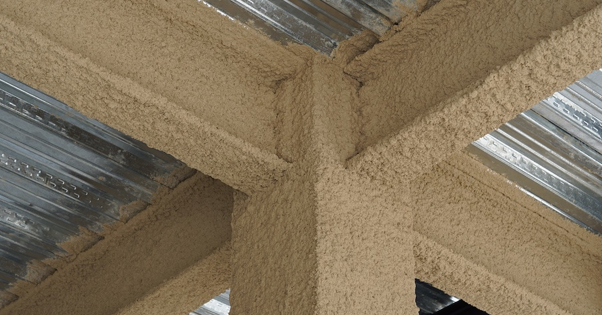Understanding the Science Behind Cementitious Fireproofing's Properties in Passive Fire Protection
Passive Fire Protection (PFP) is a critical component in building safety, designed to contain fires and prevent their spread. Among the various materials used in PFP, cementitious fireproofing stands out due to its robustness and efficacy. This article delves into the science behind cementitious fireproofing, explaining its properties and role in passive fire protection.
What is Cementitious Fireproofing?
Cementitious fireproofing refers to a mixture of cement-based compounds that, when applied to building elements like steel structures, provide a fire-resistant barrier. These coatings are typically sprayed or troweled onto surfaces, forming a thick, durable layer that insulates the material beneath from high temperatures during a fire.
Composition of Cementitious Fireproofing
Cementitious fireproofing materials are primarily composed of:
- Portland Cement: The main binding agent that gives the fireproofing its structural integrity.
- Lightweight Aggregates: These can include materials like vermiculite, perlite, or expanded polystyrene, which reduce the density and thermal conductivity of the mixture.
- Fibers and Additives: To improve cohesion, adhesion, and durability, various fibers (such as glass or polypropylene) and chemical additives are incorporated.
Mechanisms of Fire Protection
The effectiveness of cementitious fireproofing in passive fire protection is based on several mechanisms:
- Thermal Insulation: The primary function of cementitious fireproofing is to act as a thermal barrier. The low thermal conductivity of the lightweight aggregates ensures that heat is not easily transferred to the underlying structure, delaying its temperature rise.
- Endothermic Reaction: During a fire, some components of the fireproofing material undergo endothermic reactions, absorbing heat and further slowing the temperature increase. For instance, the water in hydrated cement can evaporate, consuming a significant amount of heat.
- Physical Barrier: The physical thickness of the cementitious coating provides an added layer of protection. This barrier can withstand direct flame contact and prevent the structural elements from reaching critical temperatures.
- Structural Integrity: Even at elevated temperatures, cementitious fireproofing maintains its integrity, preventing spalling or cracking that could expose the underlying structure to heat.
Application Techniques
The application of cementitious fireproofing is crucial to its performance. The primary techniques include:
- Spray Application: Using specialized equipment, the fireproofing material is sprayed onto the surface. This method is suitable for large areas and complex geometries, ensuring an even and consistent coating.
- Trowel Application: For more controlled application, especially in smaller or more detailed areas, the material can be manually troweled onto the surface. This technique ensures a smooth and uniform finish.
Advantages of Cementitious Fireproofing
- Durability: Cementitious fireproofing is highly durable and can withstand harsh environmental conditions, including moisture and mechanical impact.
- Versatility: It can be applied to a variety of substrates, including steel, concrete, and wood, making it suitable for diverse construction needs.
- Cost-Effectiveness: Compared to other fireproofing materials, cementitious coatings are relatively inexpensive and provide a long-lasting solution.
- Non-Toxic: Once cured, cementitious fireproofing is non-toxic and does not emit harmful fumes, making it safe for use in occupied buildings.
Performance Standards and Testing
Cementitious fireproofing materials must meet stringent performance standards to be effective in passive fire protection. These standards are set by various organizations, such as ASTM International, Underwriters Laboratories (UL), and the National Fire Protection Association (NFPA).
- Fire Resistance Ratings: Fire resistance ratings are assigned based on standardized tests, such as the ASTM E119 or UL 263, which measure the material's ability to withstand fire exposure for a specified period.
- Adhesion and Cohesion Tests: These tests ensure that the fireproofing material adheres properly to the substrate and maintains its integrity under fire conditions.
- Density and Thickness Measurements: Proper density and thickness are critical to the performance of cementitious fireproofing. These parameters are regularly checked to ensure compliance with the design specifications.
Application in Indian Context
In India, where rapid urbanization and industrial growth present unique fire safety challenges, cementitious fireproofing offers a reliable solution. The diverse climatic conditions across the country, ranging from hot and humid to dry and arid, necessitate robust fire protection measures. Cementitious fireproofing's durability and versatility make it particularly suited for Indian construction practices.
Moreover, with increasing awareness and regulatory emphasis on fire safety, the demand for effective passive fire protection solutions is on the rise. Cementitious fireproofing can play a pivotal role in safeguarding buildings, infrastructure, and human lives from the devastating effects of fires.
Conclusion
Understanding the science behind cementitious fireproofing reveals its crucial role in passive fire protection. Its composition, application methods, and performance characteristics combine to create a formidable barrier against fire, protecting structures and occupants alike. As India continues to develop and prioritize fire safety, the adoption of cementitious fireproofing will be instrumental in building a safer, more resilient built environment.












Leave A Comment